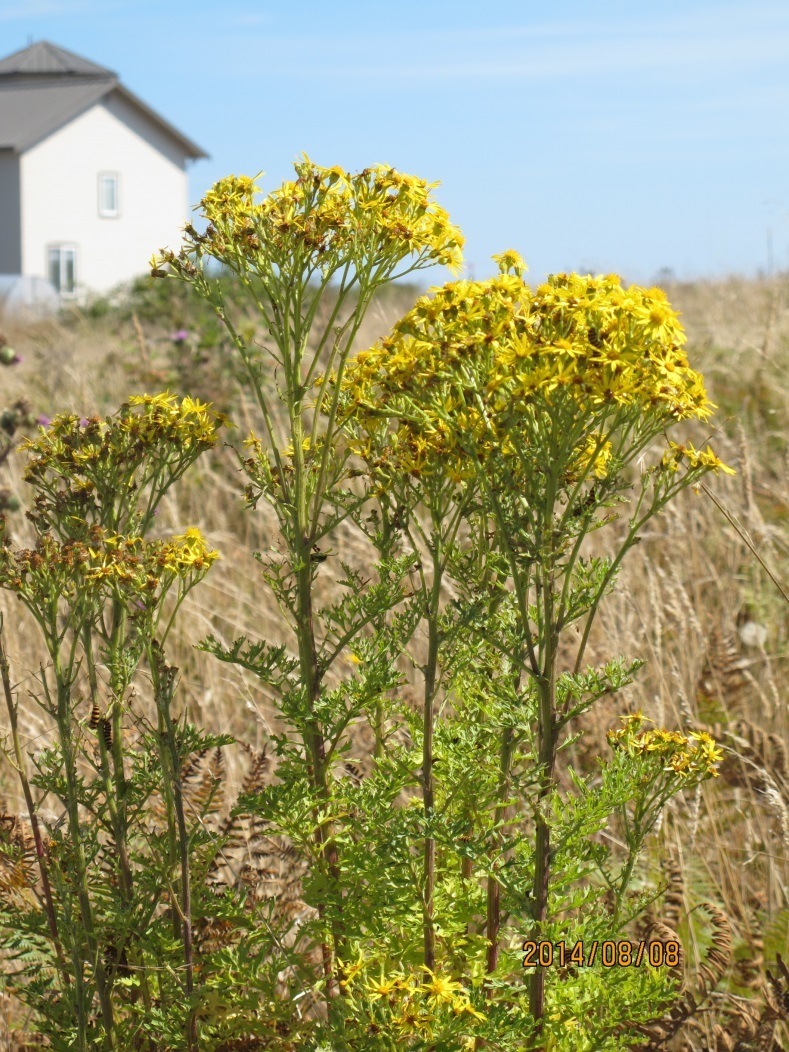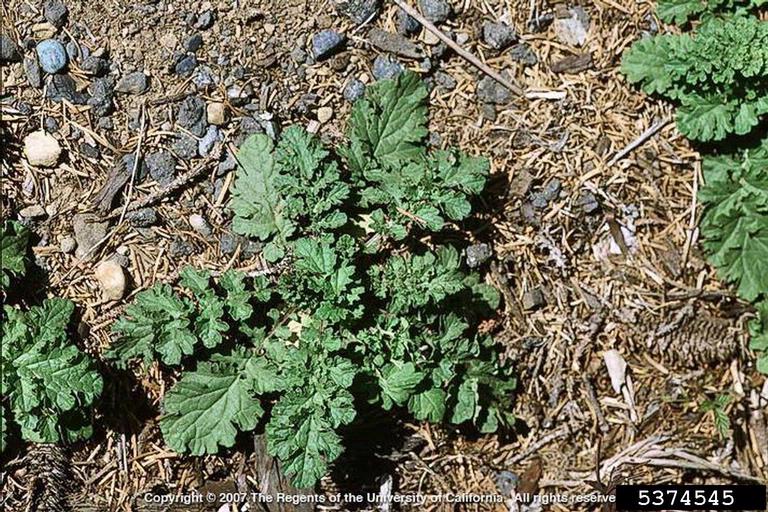Tansy Ragwort

Tansy Ragwort
(Senecio jacobaea)
Priority: - Contain / Annual Control
Tags: Agricultural | Terrestrial | Toxic | Biocontrol
Identification and Reproduction
Identification
- This toxic plant grows upright and will branch near the top, growing up to 1.2 m tall.
- During the first year tansy ragwort forms a rosette with dark green, ruffled (lobed) leaves on purple stems. Second year leaves are alternate, dark green on top, whitish-green underneath, with deeply cut, blunt-toothed lobes and a ragged, ruffled appearance.
- Flowers are bright, yellow, and daisy-like arranged in a dense, flat-topped cluster near the top of the stem.
Reproduction
- Biennial or short-lived perennial.
- Primarily reproduces from seed, but will reproduce vegetatively (from root and stem fragments).
- Seeds can be viable up to 15 years depending on depth in the soil. Tilling, grazing, or other disturbance will cause dormant seeds to germinate. Plants that go to seed will die at the end of the season.
Habitat & Ecology
Found on disturbed sites and bare ground in grazed pastures, roadsides, vacant non-crop lands, and on forest clear-cuts.
Impacts
Social:
- Reduces forage available for grazing and contaminates crops.
- Tansy ragwort is poisonous to livestock and wildlife.
Management
Mechanical/Manual Control:
- Hand pulling can be effective in small infestations where followed up with re-treatment. The entire root system must be removed if this method is used.
- Repeated mowing before flowering can be done to prevent seed production however be aware that vegetative reproduction is stimulated by mowing, grazing, or poor hand removal if the entire root mass is not removed.
- If plants are hand pulled or cut prior to flowering the plant material may be left on site to decompose. If after flowering, all plant parts including flower heads should be bagged and incinerated or buried deeply at a landfill.
Biological Control:
Tansy ragwort is under biocontrol in BC: a defoliating moth (Tyria jacobaeae), seedhead fly (Hylemya seneciella also known as Botanophila seneciella), root feeding beetles (Longitarsis flavicorni, Longitarsis jacobaeae), and root crown feeding moth (Cochylis atricapitana) have been effective in controlling tansy ragwort in many areas of the Fraser Valley.
Chemical Control:
- Control is most effective before tansy ragwort has had the chance to flower.
- Treatments are recommended during spring or early summer to target young plants and rosettes.
- Wick or selective spot spraying is effective as they treat individual plants.
- Currently, dicamba, 2,4-D, picloram and picloram + 2,4-D are registered for use on tansy ragwort.
- Please carefully read herbicide labels prior to application.
Resources
Download A Guide to Weeds in British Columbia for Tansy Ragwort here.
King County has a great guide for Tansy Ragwort ID and their look-alikes here.
Header photo (Ron Clausen).




